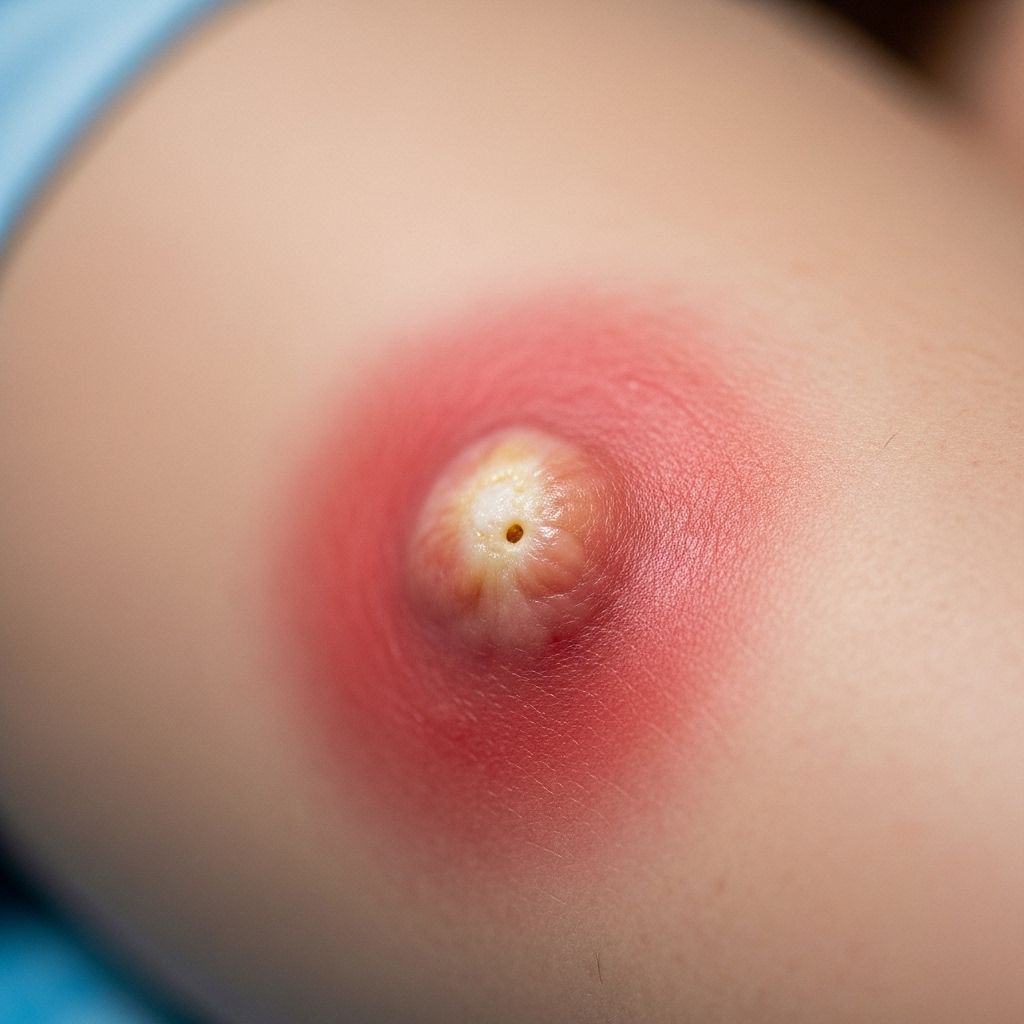Home Remedies for Boils on Inner Thighs
Natural treatments that soothe skin and encourage faster pus drainage and healing.

Introduction to Boils on Inner Thighs
Boils are painful, pus-filled bumps that can develop under the skin, often as a result of bacterial infections, typically caused by Staphylococcus aureus. These bumps can appear anywhere on the body but are more common in areas with hair follicles, such as the face, neck, armpits, buttocks, and thighs. While many boils heal on their own with proper care, severe or persistent cases may require medical attention.
Causes of Boils
Boils usually occur when bacteria infect a hair follicle. This can happen through tiny cuts or breaks in the skin. Some common risk factors for developing boils include improper hygiene, shaving, having small cuts on the skin, suffering from skin conditions like acne or eczema, and having an immune disorder that makes you more susceptible to infections.
Symptoms of Boils
Symptoms of boils include redness, swelling, and pus-filled bumps. Boils can grow in size and may feel tender to the touch. As they develop, they can become harder and more painful.
There are several home remedies that can help treat boils on the inner thighs effectively:
1. Warm Compresses
Applying a warm compress to the boil is one of the most effective home remedies. It helps increase blood circulation to the area, bringing more white blood cells to fight the infection. This can encourage the boil to ‘come to a head’ and eventually rupture, allowing it to drain and heal.
- Apply a warm compress to the boil for 10 to 20 minutes, three to four times a day.
- Repeat this process until the boil breaks and drains.
2. Tea Tree Oil
Tea tree oil has strong antibacterial and antiseptic properties that can help treat the bacterial infection causing the boil. However, it should be used with caution, as it can irritate the skin if applied undiluted.
- Mix a few drops of tea tree oil with a carrier oil like coconut or olive oil.
- Apply the mixture to the boil using a cotton swab, two to three times a day.
- Discontinue use if you experience any irritation or burning.
3. Turmeric
Turmeric contains curcumin, which has antibacterial and anti-inflammatory properties. It can be used both topically and orally to help heal boils faster.
- Orally, boil a teaspoon of turmeric powder in water or milk, then let it cool. Drink this mixture three times daily.
- Topically, mix turmeric powder with water to make a paste, and apply it to the boil at least twice a day.
- Stop using it if you notice any adverse reactions.
4. Castor Oil
Castor oil has anti-inflammatory properties that can help reduce swelling and pain associated with boils.
- Apply a small amount of castor oil to the boil using a cotton swab.
- Repeat this process two to three times a day.
5. Apple Cider Vinegar
Apple cider vinegar is known for its antibacterial properties, which can help eliminate the germs causing the boil. It also helps restore the skin’s pH balance.
- Soak a cotton swab in apple cider vinegar and apply it to the boil.
- Repeat this process two to three times a day.
6. Aloe Vera
Aloe vera can reduce discomfort and speed up the healing process due to its antiseptic and soothing properties.
- Apply aloe vera gel directly to the boil using a cotton swab.
- Repeat this process two to three times a day.
7. Neem
Neem has antibacterial and anti-inflammatory properties that can help relieve swelling and pain. It can prevent further infections around the boil.
- Apply neem oil to the boil using a cotton swab.
- Repeat this process two to three times a day.
8. Dietary Changes
Making certain dietary changes can also support healing and reduce the risk of future boils:
- Increase Vitamin and Mineral Intake: Foods rich in vitamin C, zinc, and probiotics can help boost the immune system.
- Stay Hydrated: Drinking plenty of water helps flush out toxins from the body.
- Avoid Sugary Foods: Reducing sugar intake can help manage inflammation.
Frequently Asked Questions (FAQs)
Q: How long does it take for a boil to heal with home remedies?
A: The healing time for boils can vary, but with consistent use of home remedies, most boils can heal within a week to ten days. However, if symptoms persist, it’s important to consult a healthcare professional.
Q: Is it safe to pop a boil?
A: No, it is not recommended to pop a boil yourself. Doing so can lead to infection spreading and potentially causing more serious complications. It’s best to let a boil heal naturally or seek medical attention if it becomes severe.
Q: Can home remedies cure all types of boils?
A: Home remedies can be effective for small to medium-sized boils. However, larger boils or those that do not respond to home remedies may require medical intervention, such as antibiotics or drainage.
Conclusion
Home remedies can be incredibly effective in treating boils on the inner thighs, especially when combined with proper hygiene and dietary adjustments. However, if symptoms persist or worsen, it’s crucial to seek advice from a healthcare professional.
References
- https://www.healthshots.com/preventive-care/self-care/home-remedies-for-boils/
- https://www.healthline.com/health/home-remedies-for-boils
- https://khealth.com/learn/skin/home-remedies-for-boils/
- https://www.medicalnewstoday.com/articles/321082
- https://www.webmd.com/skin-problems-and-treatments/guide/boils
- https://www.nhs.uk/conditions/boils/
- https://resources.healthgrades.com/right-care/skin-hair-and-nails/boil-on-inner-thigh
- https://my.clevelandclinic.org/health/diseases/15153-boils-and-carbuncles
Read full bio of medha deb








